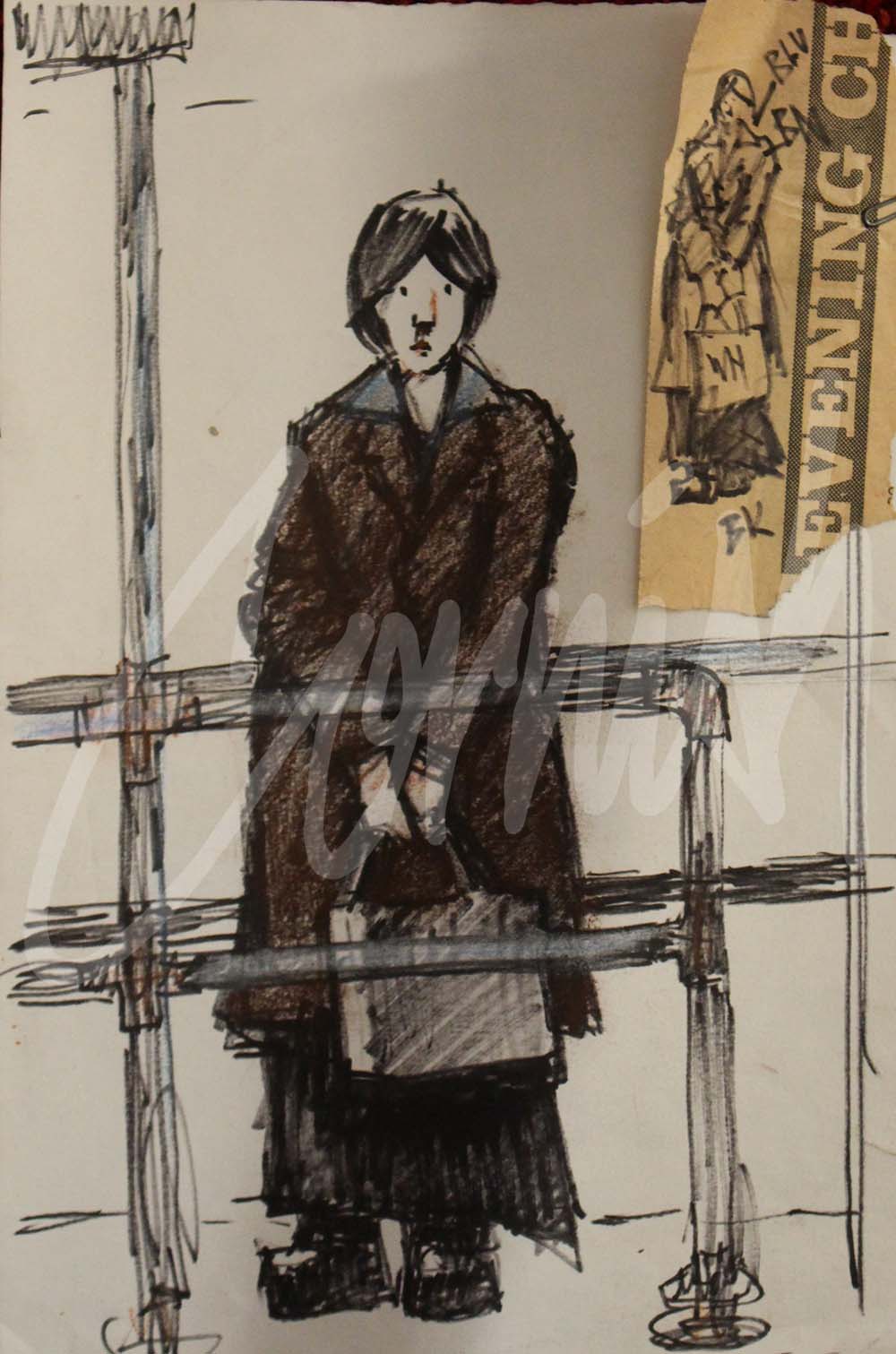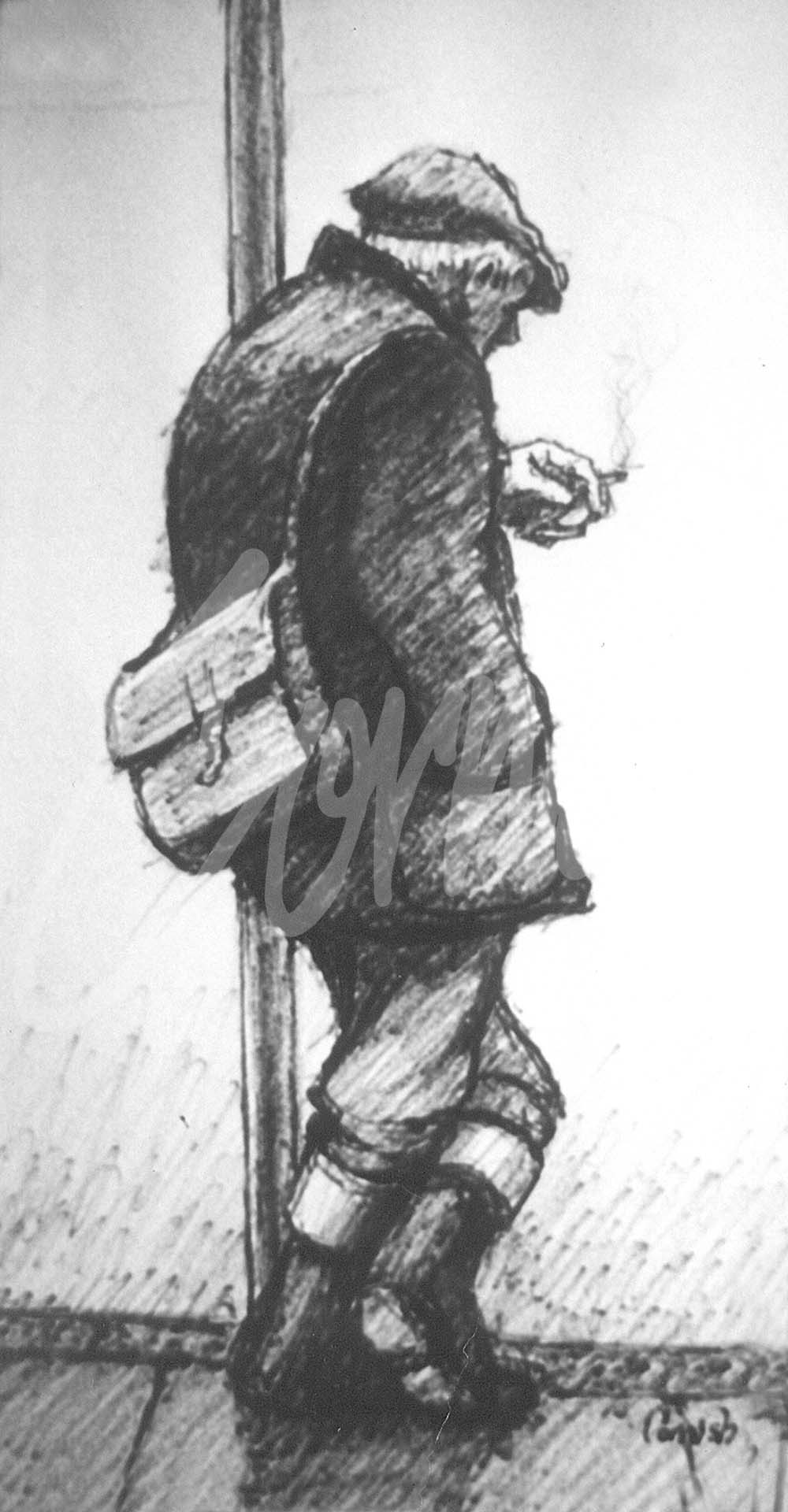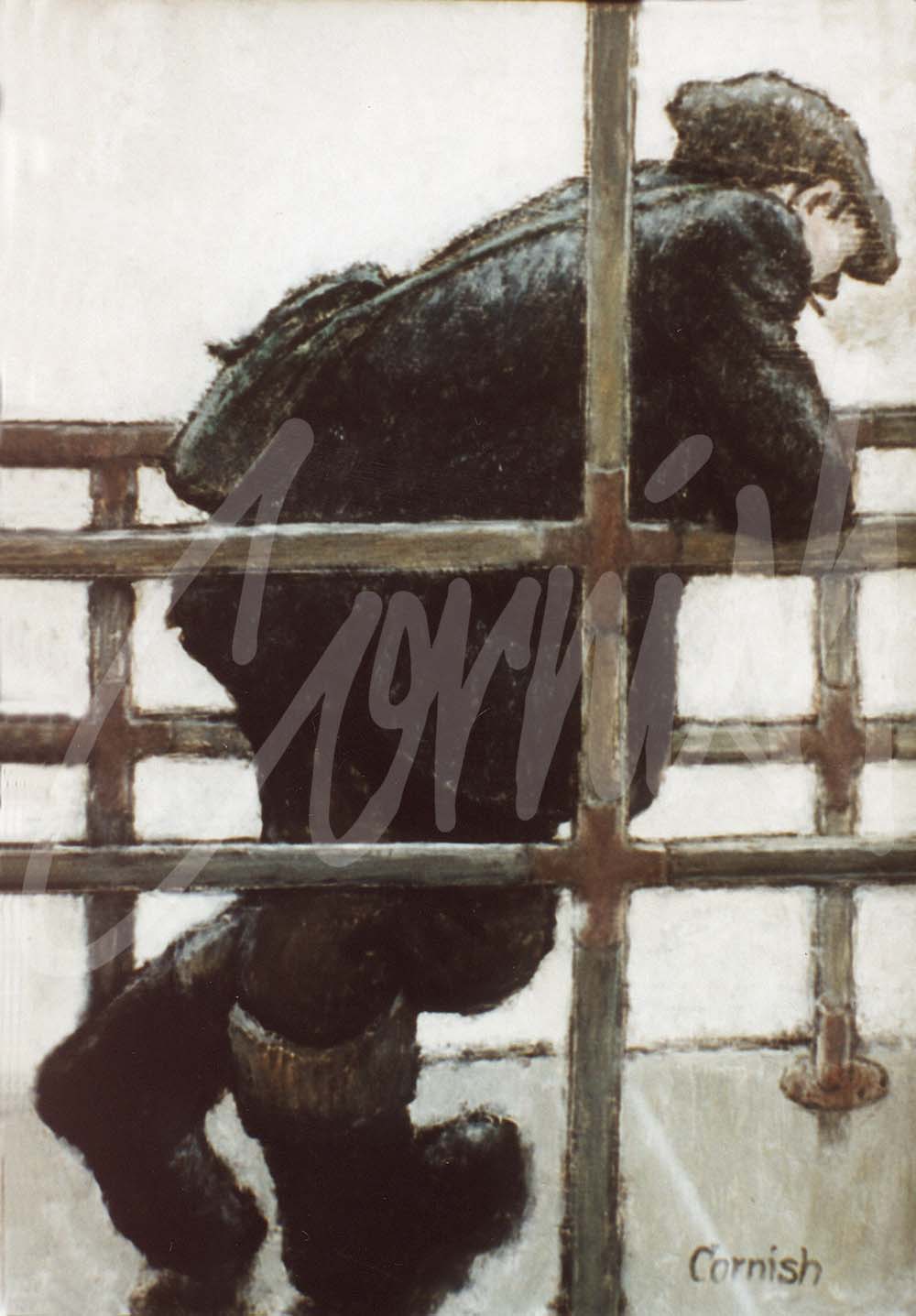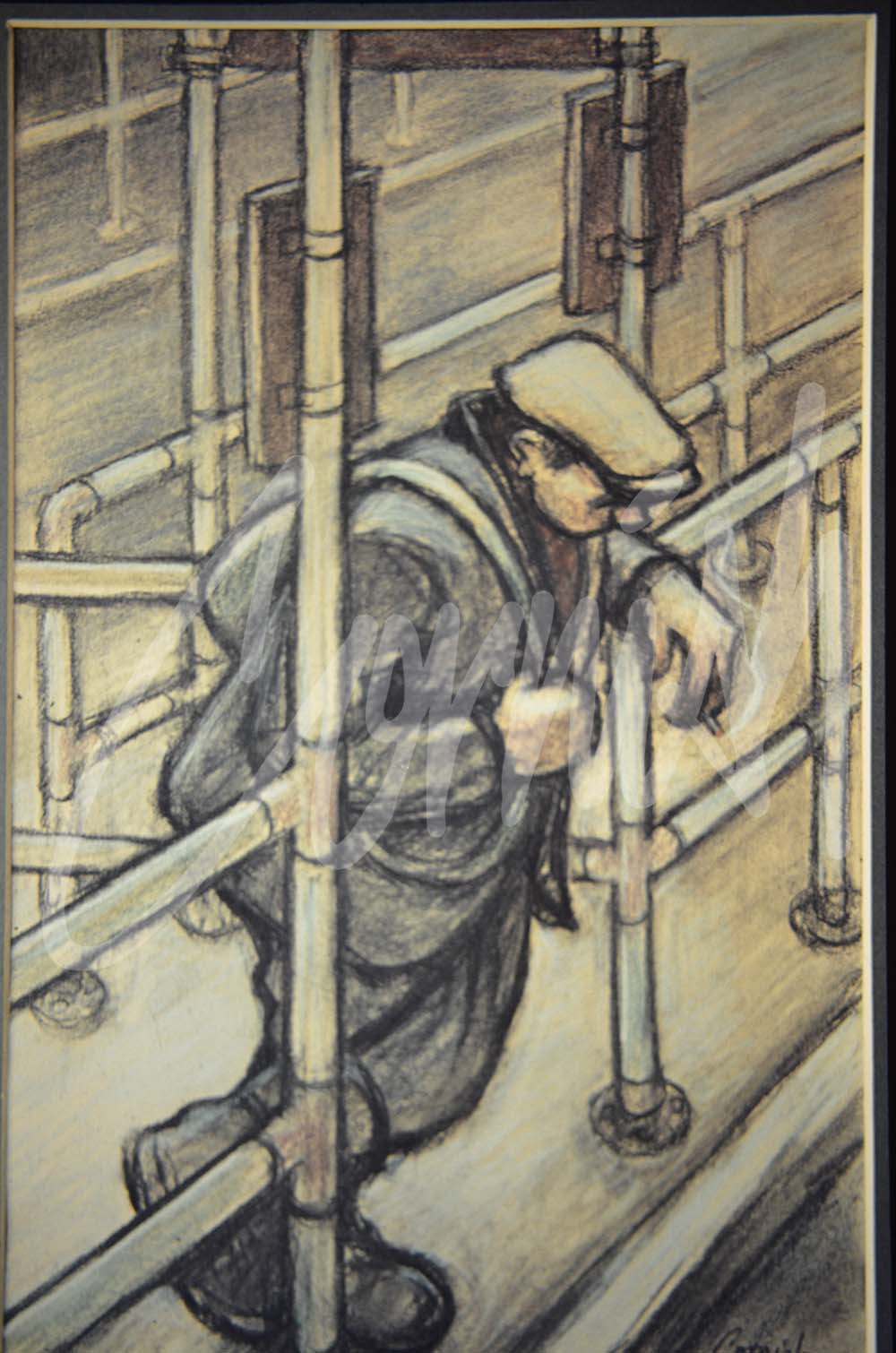
Latest News

Observations of people:
When Cornish lamented the gradual decline of the collieries, the pit road, pubs, chapels and many of the ordinary but fascinating people, we remain grateful that his ‘slice of life’ has provided a remarkable social record of those past times. His work is sometimes referred to as ‘social realism,’ and his attention to the humble and mundane activities of everyday life appears in so many of his street and bar scenes.
Whenever Cornish was out for a walk he always had his sketchbook and Flo-master pen in a specially crafted ‘poachers pocket’ that his wife Sarah had sewn into his coat. This meant that whenever something of interest captured his imagination he was quickly able to access materials to record a particular moment in time.
He walked to work every day to the Dean and Chapter Colliery at Ferryhill for almost 30 years: a distance of three miles in each direction. Occasionally his friend Jack Savage would give him a ‘run out’ in his car to some of the outlying villages in search of additional subject material. This was very fortunate for an artist who was unable to drive, and who also had no desire to learn to drive. In hindsight it was a blessing in disguise because he would have been unable to concentrate with so many interesting distractions appearing during a journey! Coincidentally, using public transport to visit places further afield also presented other opportunities and some examples are included here today.
Whenever he had to travel to Newcastle to visit his agent, Mick Marshall, at the Stone Gallery, Cornish would catch the OK bus which started its journey in Bishop Auckland and then on to Marlborough Crescent bus station in Newcastle, via Durham City. People at bus stops along the route became an obvious subject of interest and some readers may recognise the bus stands from North Road in Durham City. A scrap of paper on one occasion from the Evening Chronicle, a Newcastle newspaper, provided an opportunity to ‘snatch’ a preparatory sketch. Working men with ‘bait bags’ were ubiquitous and another source of interest. The view from a bus was also the opportunity for a different view point.
Cornish possessed a deep understanding of human behaviour and social interaction. He recorded local people going about their daily tasks, living real lives. Sometimes the drawings would become paintings and on other occasions would be included in the many street scenes synonymous with his work. Throughout his career he was conscious of his contribution to a sociological and historical record of people and places, in his ‘slice of life.





